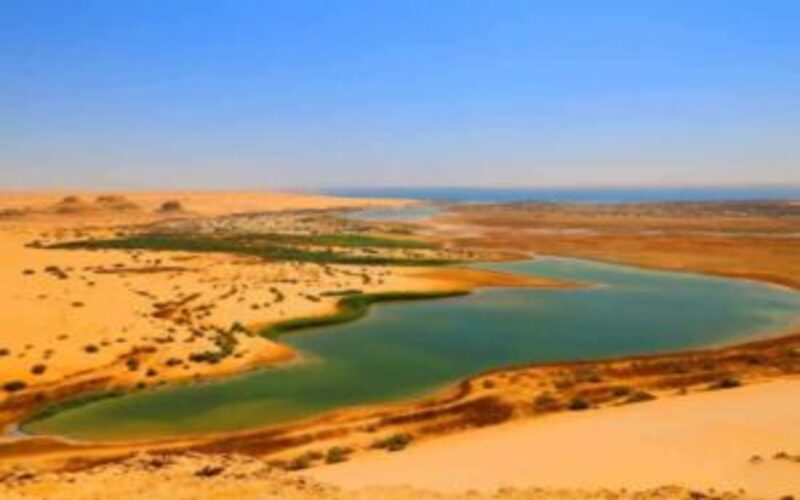5 days / 4 nights: 3 nights in Cairo + 1 nights in Alexandria
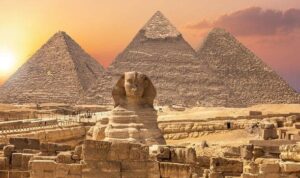
After the rest of the day at the hotel, we will head to one of the Seven Wonders of the Ancient World: the Pyramids of Giza.
The complex has three main pyramids of the pharaohs: Cheops, Khafre and Mycerinus Visit the Great Sphinx of Giza, built during the reign of Pharaoh Khafre (2620 BC).
Built from natural yellow calico stone, this unmistakable statue is 20 meters high and 57 meters wide and combines the head of a pharaoh with the body of a lion.

After a lunch stop at a local restaurant, transfer to Memphis, which
was the first capital of Egypt and the center of government and culture
for more than 3,000 years founded by King Menes.
You can also see the statue of King Ramses II.

Saqqara is an Egyptian village in Badrashin markaz (county) in the governorate of Giza, which contains ancient cemeteries of Egyptian royalty and serves as the necropolis of the ancient Egyptian capital, Memphis.
Saqqara It contains numerous pyramids, including the Pyramid of Djoser.
sometimes called Stepped Tomb, and several mastaba tombs.
Situated about 30 km (19 mi) south of present-day Cairo, Saqqara covers an area of around 7 by 1.5 km (4.3 by 0.9 mi).
Saqqara contains the oldest known complete stone building complex of history, the Pyramid of Djoser, built during the Third Dynasty.
Sixteen other Egyptian kings built pyramids at Saqqara, which are now in various states of preservation.

The Qaitbay Citadel is a 15th-century defensive fortress located on the coast of the Mediterranean Sea, in Alexandria, Egypt.
It was built between 1477 and 1479 AD. C. (882–884 AH) by Sultan Al-Ashraf Sayf al-Din Qa’it Bay. The Citadel is located on the eastern side of the northern tip of Pharos Island at the mouth of the Harbor.
oriental.
Many structural modifications were made to the lighthouse after the Arab conquest of Egypt, but the lighthouse continued to operate for many centuries.
The restoration began in the period of Ahmed Ibn Tulun (around 880 AD).

Pompey’s Pillar or ship’s mast built in honor of Diocletian in 292 AD is located in Alexandria, in the area known as Kom elDekka, and dominates the area.
At the base of the pillar we find an inscription: “Postumas, a governor of Alexandria, erected this pillar in honor of the just emperor Diocletian.
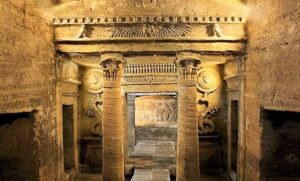
It is considered one of the Seven Wonders of the Middle Ages.
The necropolis consists of a series of Alexandrian tombs, statues and archaeological objects from the pharaonic funerary cult with Hellenistic and early imperial Roman influences.
Due to the era, many of the features of the Kom El Shoqafa catacombs fuse Roman, Greek and Egyptian cultural points; Some statues are Egyptian in style, but sport Roman clothing and hairstyles, while other features share a similar style.
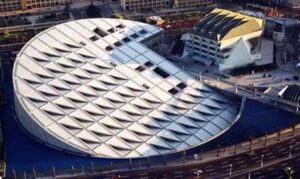
The Great Library of Alexandria in Alexandria, Egypt, was one of the largest and most important libraries in the ancient world.
The library was part of a larger research institution called Mouseion, dedicated to the Muses, the nine goddesses of the arts.
The idea of a universal library in Alexandria may have been proposed by Demetrius of Phalerus, an exiled Athenian
statesman living in Alexandria, to Ptolemy I Soter, who may have laid out plans for the library, but the library itself was probably not built until the reign.
of his son Ptolemy II Philadelphus.

At night we will walk along the ledge to see the wonderful landscape and eat corn and potatoes on the ledge.
The same day we will return to Cairo and stay at the hotel.
Faiyum taken from Coptic: Phiom or Phiÿm from Ancient Egyptian is a city in Middle Egypt.
Located 100 kilometers (62 miles) southwest of Cairo, in the Faiyum Oasis, it is the capital of modern Faiyum Governorate.
Originally called Shedet in Egyptian, the Greeks called it in Koinÿ Greek: ÿÿÿÿÿÿÿÿÿÿÿÿÿÿÿ, Romanized: Krokodilópolis, and later in Medieval Greek: ÿÿÿÿÿÿÿ, Romanized: Arsinoë.
It is one of the oldest cities in Egypt due to its strategic location.
Among the springs, there are three sulfur springs on the south side of the lower lake, with extensive mobile sand dunes. The Wadi El Rayan waterfalls are considered the largest in Egypt.
Wÿdÿ al-ÿÿtÿn is a paleontological site in the Faiyum Governorate of Egypt, about 150 kilometers (93 mi) southwestof Cairo.
It was designated a UNESCO World Heritage Site in July 2005 for its hundreds of fossils of some of the oldest forms.
whale, the archaeoceti (a now extinct suborder of whales).
The site reveals evidence for the explanation of one of the greatest mysteries of whale evolution: the emergence of the whale as an oceanic mammal from a previous life as a land animal.
The modern name of the city comes from the Coptic epÿiom/peiom (hence the proper name payom), meaning sea or lake, which in turn comes from the late Egyptian pÿ-ym of the same meaning, a reference to the nearby Lake Moeris; the extinct ancestor of the Phiomia elephant was named after him.
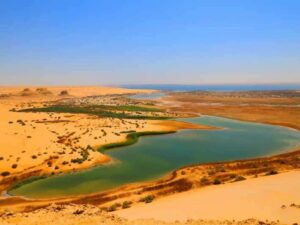
The Magic Lake is a beautiful lake located in Wadi El Hitan in Fayoum.
It was named Magic Lake because it changes color several times a day depending on the time of year and the amount of sunlight it receives.

The Wadi El-Rayan valley has an area of 1,759 km2, of which 113 km2 is the dominant water body of the Wadi El-Rayan lakes.
It is located about 65 km southwest of the city of Faiyum and 80 km west of the Nile River.
The Wadi has been used for artificial lakes from agricultural drainage, making the two separate lakes of Wadi El a reserve.
Rayan Among the springs, there are three sulfur springs on the south side of the lower lake, with extensive mobile sand dunes.
The Wadi El Rayan waterfalls are considered the largest in Egypt.

Wÿdÿ al-ÿÿtÿn is a paleontological site in the Faiyum Governorate of Egypt, about 150 kilometers (93 mi) southwest of Cairo.
It was designated a UNESCO World Heritage Site in July 2005 for its hundreds of fossils of some of the oldest forms.
whale, the archaeoceti (a now extinct suborder of whales).
The site reveals evidence for the explanation of one of the greatest mysteries of whale evolution: the emergence of the whale as an oceanic mammal from a previous life as a land animal.

A new and pleasant adventure in the Fayum desert and we will contemplate the beautiful landscapes.
Breakfast.. Visit to the interesting Museum of Archaeological and Egyptian Art, where inside you will find a multitude of treasures from the pharaonic era and Tut’s Ankh-Amun collection.
The tour continues to the Citadel of Salah El Din, built to protect Cairo and Fustat from the crusaders and unite them into a single front. Inside the citadel.
You can visit the alabaster mosque of Mohamed Ali. After visiting El Fayoum we will return to Cairo.

Breakfast.. Visit to the interesting Museum of Archaeological and Egyptian Art, where inside you will
a multitude of treasures from the pharaonic era and Tut’s Ankh-Amun collection.

The tour continues to the Citadel of Salah El Din, built to protect Cairo and Fustat from the crusaders and unite them into a single front.
Inside the citadel.
You can visit the alabaster mosque of Mohamed Ali.
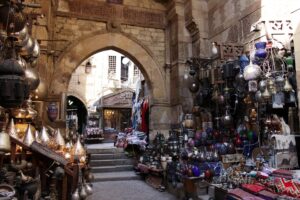
Khan el-Khalili is a famous bazaar and souk (or souk) in thehistoric center of Cairo, Egypt.
Established as a center of trade in the Mamluk era and named for one of its several historic caravanserais, the bazaar district has since become one of Cairo’s top attractions for tourists and Egyptians alike.
It is also home to many Egyptian artisans and workshops involved in the production of traditional crafts and souvenirs.
The name Khan el-Khalili historically referred to a single building in the zone; today it refers to the entire commercial district.
Do not hesitage to give us a call. We are an expert team and we are happy to talk to you.
+201070700426
Info@asteriscoegypt.com

